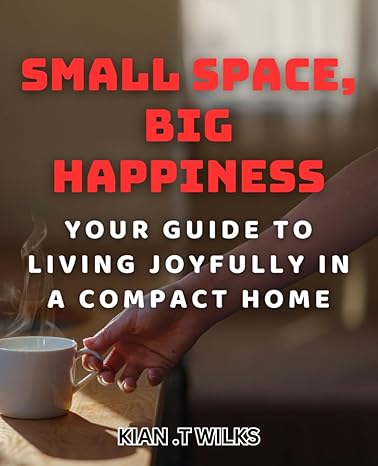Embracing the Art of Compact Living Spaces
In an era where urbanization is rapidly increasing and cities are becoming more densely populated, the concept of compact living spaces has gained significant prominence.
This lifestyle shift, driven by necessity and a growing awareness of sustainability, encourages a minimalist approach to living. Compact living spaces are not only an answer to spatial constraints but also a testament to human ingenuity in maximizing utility and comfort in limited areas.
This essay delves into the various dimensions of compact living spaces, examining their benefits, challenges, and the innovative design solutions that make them viable and appealing.
The Rise of Compact Living
The trend towards compact living spaces has been largely influenced by urbanization and the skyrocketing cost of real estate in major cities worldwide. As people flock to urban centers in search of better job opportunities and amenities, the demand for housing has surged.
Consequently, many urban dwellers are finding themselves living in smaller apartments or micro-homes. Compact living spaces, typically ranging from 100 to 500 square feet, offer a solution to this spatial squeeze by providing affordable and efficient housing options.
Benefits of Compact Living
One of the most compelling benefits of compact living is the promotion of a minimalist lifestyle. In smaller spaces, residents are compelled to prioritize their possessions, leading to reduced clutter and a focus on essential items.
This shift not only simplifies daily life but also fosters a sense of mental clarity and well-being. Moreover, maintaining a compact living space is generally easier and less time-consuming, allowing individuals to allocate more time to activities they value.
Environmental sustainability is another significant advantage. Smaller homes require less energy to heat, cool, and light, which reduces the overall carbon footprint.
Additionally, the compact living model often incorporates eco-friendly materials and energy-efficient appliances, further contributing to environmental conservation.
By optimizing space, these homes also encourage sustainable living practices, such as water conservation and waste reduction.
Challenges of Compact Living
Despite its many benefits, compact living is not without challenges. One of the primary concerns is the potential for a lack of personal space and privacy, which can be particularly challenging for families or individuals who work from home. The limited storage space can also pose difficulties, requiring creative solutions to avoid a cramped and cluttered environment.
Another challenge is the adaptation to a new lifestyle. For many, the transition to a smaller living space necessitates a significant change in mindset and habits. It requires learning to live with fewer possessions and making conscious choices about what is truly necessary. This can be a daunting process for those accustomed to more spacious living conditions.
Innovative Design Solutions
To address these challenges, architects and designers have developed innovative solutions that enhance the functionality and livability of compact spaces. Multifunctional furniture is a cornerstone of compact living design.
Items such as sofa beds, fold-out tables, and modular shelving units serve dual purposes, maximizing the utility of every square foot. Additionally, built-in storage solutions, such as under-bed drawers and wall-mounted cabinets, help to optimize space without compromising on aesthetics.
Open floor plans and the use of light colors can also create an illusion of space, making small areas feel larger and more inviting. The incorporation of large windows and mirrors can further enhance this effect by increasing natural light and reflecting the existing space.
Smart home technology, such as automated lighting and climate control, adds to the efficiency and convenience of compact living spaces.
Conclusion
Compact living spaces represent a pragmatic and sustainable response to the challenges of urbanization and limited housing availability.
While there are undeniable challenges associated with downsizing, the benefits of minimalism, environmental sustainability, and innovative design solutions make compact living an attractive option for many.
As urban populations continue to grow, the principles and practices of compact living will likely become increasingly relevant, shaping the future of residential architecture and urban planning.
By embracing the art of living small, we can create more efficient, sustainable, and harmonious living environments that cater to the evolving needs of modern society.

